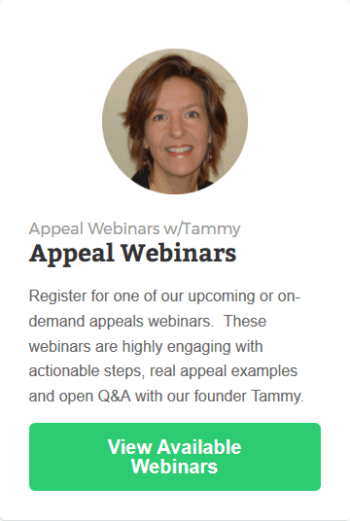Physicians often lament the days of yore when treatment decisions were made in the exam room and not the insurance company board room. However, a healthcare consultant who specializes in assisting healthcare organization secure coverage for new medical technology says physicians still have a say in individual coverage decisions.
Mary Corkins, Founder of The Reimbursement Group, assists healthcare organizations navigate the ins and outs of securing coverage for technology biologics and medical devices. She consults on the range of challenges new medical products face, from launch to collections and one of the unique services she provides is telephone support during physician peer reviews involving coverage decisions.
Peer-to-Peer conferences, Corkins acknowledges, are “avoided like the plague” for a number of compelling reasons. Historically, peer-to-peer was not an across-the-board protection and not widely available for many denials. Further, companies that did provide peer-to-peer conference availability may not have offered this level of review for all types of denials and/or did not maintain the caliber of specialty reviewers to make the conferences truly peer-to-peer.
Corkins has published a number of recent articles to focus attention on recent changes in peer-to-peer conversation which makes this level of review more attractive.
“Most practicing physicians have a very poor understanding of Insurer criteria for decision-making. They are left feeling powerless and out of their element – and therefore, disinclined to participate in P2P’s. And really, who can blame them?” Corkins wrote in an article recently published on LinkedIn.
Corkins explains that the Affordable Care Act included regulations specific to pre-service coverage decision, making Peer-to-Peer (P2P) conference calls more widely accessible and more professional. Despite this increased availability, Corkins believes physicians are dealing with so many ACA-driven changes that they have not been able to concentrate much time and/or resources to conducting peer conversations. However, she says the end result of accepting the ACA regulations without fighting the denials is a lose-lose proposition.
“Physician fees have been cut substantially. They are required to maintain stronger and more robust documentation of provided care. They must maintain adequate staffing, malpractice insurance coverage, re/credentialing with Insurer networks, compliance with HIPAA regulations, relevant OIG advisories, and adherence to the Safe Harbor and Stark I & II statues. The impact of this continued overburdening of physicians with P2P’s is increased denial of services for the patient. It means fewer choices and less attractive healthcare options,” she writes.
“In our experience managing tens of thousands of cases, we’ve been able to put enough control back in the hands of the practicing physicians! Of the physicians that we support, approximately 80% now participate in the P2P’s. With educated participation in the P2P’s, our approval yield is currently running at approximately 75%.”
Such results are impressive. Corkins says her role on the call is to organize the clinical information so the doctor can easily reference the clinical justification for care and to assess the insurance companies compliance with the applicable peer-to-peer standards. However, she encourages healthcare organizations who are not utilizing a peer-to-peer consultant to train a staff member in the process so that this employee can serve as an internal support
person for peer-to-peer conferences. The 2014 Utilization Review and Accreditation Commission (URAC) standards overview and frequently-asked-questions are at www.urac.org/resource-center/standards-interpretations.
One of the most frequently cited quality issues related to peer conversation centers on the qualifications of the review peer representing the insurance carrier. The URAC states that these reviewers must be “clinical peers” which is further described in the following terms: “Are in the same profession and in a similar specialty as typically manages the medical condition, procedure, or treatment as mutually deemed appropriate.”
Corkins also provides the following “Do’s and Don’ts” for achieving success in peer-to-peer conversations:
DO:
- Provide a BRIEF description of your background and specialty credentials; ask for a background statement of the credentials of the Medical Director representing the Payor
- Re-state that you are asking for “Individual Consideration” for this patient
- Provide specific detail on why THIS patient is in need of an intervention in order to address specific conditions/problems
- Provide a detailed listing of failed conservative care treatments and medications (include dosages)
- Provide approximate number of times that you have performed this procedure
- Provide ‘general and anecdotal’ patient response experiences, if applicable
- Provide a comment that you discussed the patient’s recommended options for treatment AT THIS JUNCTURE, and that you and the patient BOTH agreed that this
procedure provided the best opportunity for clinical improvement(s) - Provide a copy of FDA approval/clearance letter along with all available publications relating to device/procedure
DON’T:
- Comment on Insurance Company formal Policies and Procedures….this is about specific ‘individual consideration’
- Make an impassioned-only plea….this should be about outcomes & evidence
- Talk about payment levels or amounts at this point…wait until they finalize a decision.
The Reimbursement Group provides additional information about case management at trgltd.com.




Leave A Response